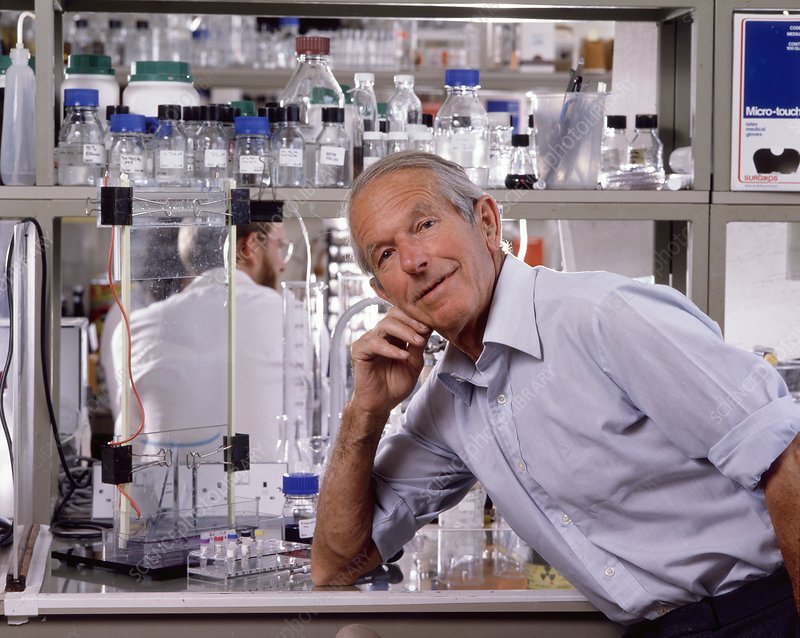Frederick Sanger was a British biochemist who is the only person to be awarded Nobel Prize in Chemistry twice. In 1958, he was awarded a Nobel Prize in Chemistry “for his work on the structure of proteins, especially that of insulin”. In 1980, Walter Gilbert and Sanger shared half of the chemistry prize “for their contributions concerning the determination of base sequences in nucleic acids”.
Frederick Sanger was born on 13 August 1918 in Rendcomb, a small village in Gloucestershire, England, the second son of Frederick Sanger, a general practitioner, and his wife, Cicely Sanger
Sanger did his schooling from Downs School near Malvern in 1927 at an age of 9. Until then he studied at home only. In 1932, at the age of 14, he was sent to the recently established Bryanston School in Dorset where he completed his schooling 1 year early.
Sanger went to St John’s College, Cambridge to study natural sciences in 1936. He completed his degree in 1940 and got his honors degree. Sanger began studying for a Ph.D. in October 1940 under N.W. “Bill” Pirie. His project was to investigate whether edible protein could be obtained from the grass.
After little more than a month, Pirie left the department and Albert Neuberger became his adviser. Sanger changed his research project to study the metabolism of lysine and a more practical problem concerning the nitrogen of potatoes. His thesis had the title, “The metabolism of the amino acid lysine in the animal body“. He was examined by Charles Harington and Albert Charles Chibnall and awarded his doctorate in 1943.
Sanger in 1943 joined the group of Charles Chibnall, a protein chemist who had recently taken up the chair in the Department of Biochemistry at his college. On Chibnall’s suggestion, Sanger started studying the amino groups of Insulin.
Sanger’s first triumph was to determine the complete amino acid sequence of the two polypeptide chains of bovine insulin, A and B, in 1952 and 1951, respectively. Prior to this, it was widely assumed that proteins were somewhat amorphous. In determining these sequences, Sanger proved that proteins have a defined chemical composition. He extended this to many other proteins as well. This got him his first Nobel Prize in 1958.
In 1962, Sanger moved to the Laboratory of Molecular Biology, a lab by Medical Research Council. There he worked on RNA and DNA sequencing. In 1977 Sanger and colleagues introduced the “dideoxy” chain-termination method for sequencing DNA molecules, also known as the “Sanger method”. This was a major breakthrough and allowed long stretches of DNA to be rapidly and accurately sequenced. It earned him his second Nobel prize in Chemistry in 1980, which he shared with Walter Gilbert and Paul Berg.
Sanger supervised more than 10 Ph.D. students in his career and two of them namely Rodney Porter and Elizabeth Blackburn went on to win Nobel Prize in Physiology or Medicine in 1972 and 2009 respectively. Porter won Nobel Prize for his work on the chemical structure of antibodies and Elizabeth won it for her work on telomeres and the action of telomerase.
Sanger won numerous prestigious awards for his invaluable contributions. Even after achieving so much, he was very simple and didn’t expect any fame our any special status. For example, Sanger declined the offer of a knighthood just because he did not wish to be addressed as “Sir“. He is quoted as saying, “A knighthood makes you different, doesn’t it, and I don’t want to be different.”
So, that was about another great scientist.

